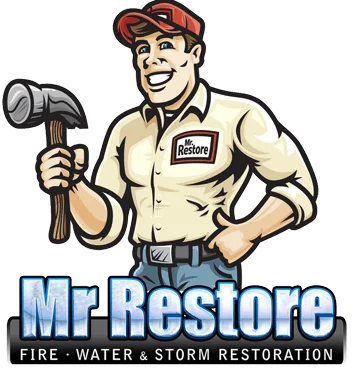Are you aware of the hidden dangers water damage might be causing in your home?
Water damage often lurks in places that are not easily visible, causing problems long before they are noticed. Here’s how you can spot water damage in those hard-to-reach areas of your home.
- Check Under Sinks and Cabinets One of the most common places for hidden water damage is under sinks and cabinets. Regularly inspect these areas for signs of leaks or moisture. Look for water stains, mold growth, or a musty smell. Small leaks can lead to significant damage over time if left unchecked.
- Inspect Behind Appliances Appliances like refrigerators, dishwashers, and washing machines are notorious for causing hidden water damage. Move these appliances periodically to check for any signs of water leakage. Pay attention to the flooring and walls behind them, looking for discoloration, warping, or mold.
- Examine the Attic Water damage in the attic can often go unnoticed until it becomes a major issue. Regularly inspect your attic for signs of roof leaks, such as water stains on the ceiling, damp insulation, or a musty odor. Ensure that your attic is well-ventilated to prevent moisture buildup and mold growth.
- Look at the Basement Basements are prone to water damage due to their location below ground level. Inspect your basement for signs of water intrusion, such as cracks in the foundation, damp walls, or a persistent musty smell. Consider using a dehumidifier to control humidity levels and prevent mold growth.
- Inspect Around Windows and Doors Windows and doors are common entry points for water. Check the frames for signs of water damage, such as peeling paint, discoloration, or soft wood. Ensure that the seals around windows and doors are intact and replace any damaged weatherstripping or caulking.
- Check Ceilings and Walls Water damage can often be detected by changes in your ceilings and walls. Look for stains, bubbling or peeling paint, and areas that feel soft or spongy to the touch. These signs can indicate a leak from the roof, plumbing, or an appliance.
- Monitor Flooring Different types of flooring show water damage in different ways. Hardwood floors may warp or buckle, while carpets may develop mold or mildew. Check for discoloration, soft spots, or a change in texture, which can all be signs of water damage beneath the surface.
- Investigate Plumbing Fixtures Regularly inspect around toilets, bathtubs, and showers for signs of water damage. Look for discoloration or soft spots on the floor and walls around these fixtures. Ensure that the caulking and grout are in good condition to prevent water seepage.
- Use Moisture Meters and Thermal Cameras For a more thorough inspection, consider using moisture meters or thermal cameras. These tools can detect moisture levels behind walls and under floors, helping you identify hidden water damage that may not be visible to the naked eye.
By keeping a vigilant eye on these hard-to-reach places, you can catch water damage early and take steps to repair it before it becomes a major problem. Regular inspections and maintenance are essential for protecting your home from the hidden dangers of water damage.






